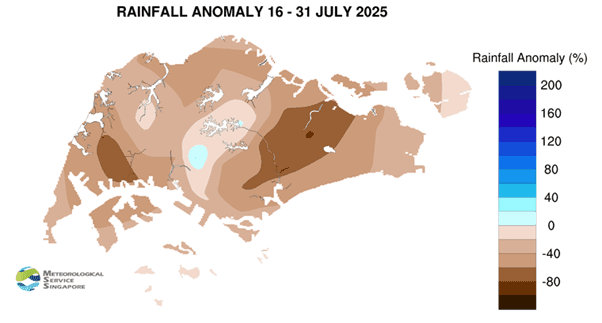Atmosphere Unlocked: The Global AI Pursuit Reshaping Our Weather World
Explore how AI is revolutionizing weather prediction, from hyper-local forecasts to global models. Uncover the tech race reshaping how we anticipate future storms and climate.
The New Horizon: AI's Entry into Weather Forecasting
A quiet revolution is sweeping through the world of atmospheric prediction, fundamentally altering how we perceive and prepare for weather. Artificial Intelligence, long a force in various tech sectors, has decisively entered meteorology, setting the stage for a new era of forecast accuracy. At the forefront, nations and organizations are engaged in what can only be described as a technological race to harness AI's immense potential. In the United States, the ’s has unveiled , an AI-powered regional system delivering granular, short-range forecasts essential for localized events. Across the Atlantic, is integrating its , built on sophisticated transformer architectures, into existing pipelines, promising faster, data-driven predictions. Not to be outdone, has developed , a transformer-based model providing high-accuracy medium-range global forecasts. Even is actively developing its own AI-based models, signaling a truly global pursuit. This isn't just about incremental improvements; it’s about a paradigm shift, where AI offers a fresh lens through which to understand our dynamic atmosphere.
Pinpointing the Clouds: Hyper-Local AI Precision
The true game-changer AI brings to weather forecasting lies in its ability to pinpoint phenomena with unprecedented hyper-local precision. Imagine knowing exactly when and where a sudden downpour will hit your street, or precisely how a microburst might affect a specific farm. exemplifies this, offering highly localized forecasts within a critical 1-to-6-hour window, providing the fine-grained, timely data crucial for managing localized weather events. Beyond regional applications, AI is also transforming global prediction. in the , for instance, developed , a remarkable system utilizing Graph Neural Networks. Trained on vast reanalysis data, can produce global forecasts up to 10 days ahead with a resolution of approximately 25 km, often surpassing the accuracy of traditional numerical weather prediction (NWP) models like , all while completing forecasts in mere minutes. is already building on this by fine-tuning with operational data, pushing the boundaries of practical application. This leap in precision isn't just academic; it directly translates to improved handling of extreme weather, allowing communities to brace for impact with greater certainty.
A Global Game: Leading Nations in AI Atmospheric Modeling
The advancements in AI atmospheric modeling aren't isolated incidents; they represent a concerted, global effort, a strategic 'game' where nations are vying for leadership. , through organizations like , is clearly a frontrunner, not only integrating AI models like but also fostering innovation via initiatives such as the . Their approach complements traditional NWP, demonstrating a path where new technologies enhance established systems rather than replacing them outright. , with its model from the , has rapidly emerged as a formidable player, focusing on scalable operational use for high-accuracy medium-range global forecasts. Meanwhile, the , driven by broader AI integration initiatives and partnerships with industry giants like , is pushing boundaries with systems like for regional precision and for global fine-tuning. Even is making significant strides, with the actively incorporating AI and Machine Learning into its research and operational frameworks, including dedicated funding and a virtual center for AI/ML/DL at . This competitive yet collaborative global push is accelerating innovation, ensuring that the benefits of AI in weather prediction are realized on an international scale.
The Meteorologist's New Partner: AI's Role in Prediction
Far from rendering human meteorologists obsolete, AI is quickly becoming their most valuable new partner, fundamentally reshaping the practice of weather prediction. AI-powered systems aren't designed to take over; instead, they augment the capabilities of traditional models, providing faster, more data-driven insights. Consider how AI models can correct biases in NWP outputs, refining accuracy where human intuition or complex physics models might struggle. They excel at processing massive datasets and identifying subtle patterns that precede extreme weather events, helping generate multiple forecast scenarios that give meteorologists a richer, more nuanced understanding of potential outcomes. This allows human experts to shift their focus from laborious data crunching to critical analysis, interpretation, and communicating complex information to the public. The collaboration is symbiotic: AI handles the computational heavy lifting, sifting through vast atmospheric data at incredible speeds, while meteorologists leverage their deep understanding of atmospheric processes and local conditions to interpret these AI-generated predictions, providing context and making crucial, life-saving decisions. It's about enhancing human expertise with machine intelligence.

Forecasting the Future: Beyond Tomorrow's Rain
The impact of AI in weather forecasting extends far beyond simply predicting tomorrow's rain; it's redefining our entire relationship with future weather, from mitigating immediate hazards to informing long-term climate strategies. The ability to correct biases in traditional models and offer faster, more accurate data-driven predictions means we can anticipate and react to severe weather events with greater confidence, saving lives and protecting infrastructure. specific focus on using AI and ML to monitor and predict offers a glimpse into this future, where AI directly contributes to forecasting cyclone intensity, a critical factor for preparedness. This technological pursuit is not just about daily forecasts; it’s about building resilience against a changing climate. As AI models become more sophisticated, they will undoubtedly play a larger role in understanding complex global climate patterns, informing climate adaptation strategies, and even guiding policy decisions related to agriculture, energy, and urban planning. This quiet, global arms race in atmospheric prediction isn't merely a competition; it’s a collective leap towards a future where humanity is better equipped to live in harmony with, and adapt to, the powerful forces of our atmosphere.
Related Articles

Decoding Tomorrow's Whispers: The Art and Impact of Weather Prediction

Decoding Tomorrow's Whispers: The Art and Impact of Weather Prediction

The Unseen Architects of Tomorrow: How Weather Forecasts Guide Global Decisions

The Unseen Architects of Tomorrow: How Weather Forecasts Guide Global Decisions

The Unseen Architects of Our Skies: How Meteorology Navigates a Volatile Climate

The Unseen Architects of Our Skies: How Meteorology Navigates a Volatile Climate

Weather's New Imperative: How Forecasting Became Our Blueprint for Resilience
